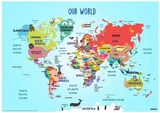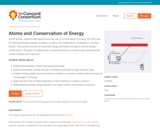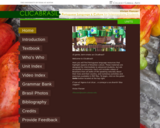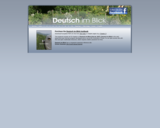
This document outlines expectations to guide the instruction of the 2017 Computer Science Standards of Learning.
- Subject:
- Computer Science
- Material Type:
- Full Course
- Author:
- Anne Petersen
- Date Added:
- 12/08/2020

This document outlines expectations to guide the instruction of the 2017 Computer Science Standards of Learning.

2017 Computer Science Standards of Learning

Accounting covers accounting principles and practices, the complete accounting cycle and creation of financial reports. Use of the general journal and special journals, general ledger, accounts payable, accounts receivable and proper financial reporting.This course provides instruction in the basic accounting procedures used to operate a business including sole proprietorship, partnerships, and corporations. The accounting procedures presented will also serve as a sound background for employment in office jobs and preparation for further education and training. The complete accounting cycle is covered, students learn how to us generally accepted accounting principles to prepare, analyze, verify financial transactions, reports and economic information to make decisions for organizations.The course trains students in the basics of manual and computerized accounting. Students learn accounting topics including ethics, accounting principles, computing accounting, accounting terminology, job specific accounting, and clerical duties related to accounting. Students also gain real-world applications in income tax, personal finance, and stock market.

This automotive course is designed for the third- and fourth-year student, providing advanced training to students as well as necessary skills and knowledge about the internal combustion engine, diesel engines, advanced car systems, and new/emerging careers in the automotive service industry. Upon completion, students will have an increased background of knowledge and skills to make repairs and adjustments on the various systems of the modern automobile, using up-to-date equipment and tools.

Students will learn about agricultural business operation and management. Topics will include accounting, finance, economics, business organization, marketing, and sales. Students will learn about agricultural business operation and management. Topics will include accounting, finance, economics, business organization, marketing, and sales.

The Agriscience/Intro to Agriculture course helps students acquire a broad understanding of a variety of agricultural areas, develop an awareness of the many career opportunities in agriculture, participate in occupationally relevant experiences, and work cooperatively with a group to develop and expand leadership abilities. Students study California agriculture, agricultural business, agricultural technologies, natural resources, and animal, plant, and soil sciences.

This Coding lesson plan is a resource used to review continents and oceans and VA's location on World map. It also contains several links to review geographic vocabulary using Quizlet , links to access SOLPASS games and a "How to code with SCRATCH" video along with a SCRATCH link with a ready made digital map to use for modeling code or to allow students to copy/remix the code to fit their needs.

In the Animal Science course, students study large, small, and specialty animals. Students explore the necessary elements--such as diet, genetics, habitat, and behavior--to create humane, ecologically and economically sustainable animal production systems.

This instructional program prepares students to use artistic and technological foundations to create animated presentations for industry and entertainment. Students will develop basic drawing and design skills, learn the fundamentals and physics movement, the concept of communication to a given audience, and techniques for self-expression through a variety of animated formats. They will explore the careers and requisite skills required by animators in both entertainment and the business world.

Architectural and Structural Engineering provides learning opportunities for students interested in preparing for careers in such areas as architecture, industrial design, and civil engineering.

In this activity, students will explore how the Law of Conservation of Energy (the First Law of Thermodynamics) applies to atoms, as well as the implications of heating or cooling a system. This activity focuses on potential energy and kinetic energy as well as energy conservation. The goal is to apply what is learned to both our human scale world and the world of atoms and molecules.

The Vehicle Maintenance, Service, and Repair course is designed for students choosing the automotive industry as a career. It provides pre-employment training to students and teaches the necessary skills, knowledge, and abilities for entry-level employment in the automotive service industry. Upon completion, students will have sufficient background to repair and make adjustments on the various systems of the modern automobile, using up-to-date equipment and tools.

This introductory automotive course is designed to provide basic training to students and teach the necessary skills, and knowledge about the internal combustion engine, basic car systems, and careers in the automotive service industry. Upon completion, students will have sufficient background to make minor repairs and adjustments on the various systems of the modern automobile, using up-to-date equipment and tools.

Biotechnology is a large scientific field that uses research tools from chemistry and biology to study or solve problems, including human disease. Biotechnologies may be used to study the genetic material of viruses and bacteria to determine whether a disease is caused by particular disease-producing agents. Its techniques are also used to understand how genetic factors contribute to human disease. The information gathered in research can be used to develop diagnostic tests that enable speedy detection and identification of a disease so that an appropriate treatment can be developed. It can also help doctors screen their patients' genomes (all of an organism's genes) for existing diseases or a predisposition for diseases such as cancer.The standards for the Biotechnology Research and Development Pathway and related courses apply to occupations and functions in biotechnology research and development that apply primarily to human health. The standards specify the knowledge and skills common to occupations in this pathway. Students participating in a strong, industy-driven Biotechnology program can expect to conduct research using bioinformatics theory and methods in areas such as pharmaceuticals, medical technology, biotechnology, computational biology, proteomics, computer information science, biology and medical informatics. Additionally, students may use extended technologies to design databases and develop algorithms for processing and analyzing genomic information, or other biological information pertinent to this field.

This competency-_based course prepares students for entry_ level positions in the cabinetmaking industry. Included in the course are cabinet design and styles, the use of advanced machines and equipment, computer_-aided manufacturing, special materials and commercial wood finishes and including green sustainable techniques and materials. Students will demonstrate their knowledge and skills by designing and building advanced wood projects. This course is for juniors and seniors only and may be taken for two years.

This concentration level course is a study of the physical, perceptual, cognitive, personality, and language developmental stages of children from conception through adolescence, including the principle theories of development and their application. The need for an understanding of how children develop and what influences their development is an important component of contributing to the demands of our complex society. Students will develop an understanding of children and the developmental process through readings, case studies, observations, individual research projects and group project work. Active class participation is enhanced by limited community classroom placement under the guidance of a mentor teacher. All students are required to observe and/or participate in settings and classrooms at the preschool/primary/elementary or middle/junior high levels at the end of the Spring semester.

The Portuguese language lessons of ClicaBrasil highlight aspects of Brazilian culture. They are designed for intermediate to advanced students, but are accessible to everyone. Each lesson includes videos of Brazilians from all walks of life speaking naturally about their lives and their country. All lessons integrate reading, writing, listening and comprehension, grammar, vocabulary, oral communication and cultural activities with the videos. This is also available as a free PDF textbook and as print on demand.

This two-semester course provides instruction in the basics of computer construction and repair; emphasizes troubleshooting and diagnosis of hardware and software failures; provides the skills necessary to gain entry-level employment in the field of computer servicing. Students have the opportunity to service and repair a wide range of personal computers while learning theory of operation and gaining programming skills. Students will use a variety of service tools. The operation of each component of a computer is studied and tested while assembling test computers. Designed to provide a solid foundation as a basis for a student's continuing education in the computer sciences.

This course will provide skills in the area of food services and hospitality. These lessons are applicable to a capstone course in food service within a 3 seqence career pathway for Hospitality, Recreation and Tourism industry sector. The student receives training in kitchen safety and sanitation, equipment and facility use, knife skills, food preparation to include: cold pantry, salads, soups and sauces, introductory baking, meats and poultry, short order cook, hot-line, institutional cook, catering, cashiering, hostessing, waiter/waitress, and bussing. Students will participate in the planning, costing, preparation, serving, storage and critique of meals in project based learning. Nutrition and applied academic skills are incorporated in each unit. Career seeking and transferrable skills are incorporated into this curriculum culminating in a portfolio. Students that perform well could be placed in work-based learning environments.

This textbook includes all 10 chapters of Deutsch im Blick (2nd ed, 2017). Deutsch im Blick is the web-based first-year German program developed and in use at the University of Texas. It is an open access site with free and open multimedia resources, which requires neither password nor fees.